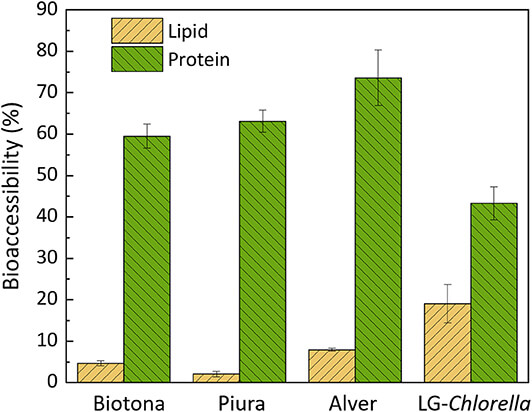Microalgae are a potentially healthy and sustainable source of nutrients. However, the bioaccessibility of these nutrients remains uncertain. Determining biomass's biochemical composition is anessential step in studying the growth of microalgal cultures under controlled conditions. Here at Lifeasible, we provide professional solutions for microalgal biochemical analysis.
Microalgal biomass is an emerging sustainable source of proteins, fatty acids, carotenoids, and carbohydrates beneficial for the microalgae-based food, nutrition, pharmaceutical, aquaculture, and cosmetic industries. Microalgae contain several species, and their biomass composition may also vary considerably. Green algae Botryococcus braunii and green algae Chorella sp. have a high lipid content and are considered ideal strains for biodiesel production. A few microalgal species, such as Spirulina, Chlorella, Dunaliella, and Scenedesmus are considered high protein resources, and their biomass can be used in protein-rich foods. Therefore, understanding the biochemical characteristics of the biomass is necessary to select the right microalgae for a specific application.
 Fig 1. Bioaccessibility of fatty acids and proteins in microalgal biomass (%). (Canelli G, et al., 2020)
Fig 1. Bioaccessibility of fatty acids and proteins in microalgal biomass (%). (Canelli G, et al., 2020)
Several traditional techniques for determining the chemical composition of algae can identify only one chemical component of microalgal biomass, complicating the study of dynamic biochemical parameters of biomass in mass-cultured microalgae. Lifeasible offers a suite of analytical services for microalgae identification and biochemical characterization. We aim to characterize microalgae in terms of biomass density as well as lipid, protein, carbohydrate, and chlorophyll content based on a complex analytical approach, enabling the extraction of valuable compounds from algae.
Our scientists have established a fundamental technique for analyzing biochemical components of microalgae biomass in the shortest possible time, allowing the definition of dry weight based on the oxidative, chlorophyll, carotenoid, total protein, carbohydrate, and lipid content of the biomass. We have successfully helped clients worldwide to determine the different biomass compositions of multiple identical microalgae species and even strains.
We offer advanced biochemical services for the characterization of microalgae.
At Lifeasible, we can quickly help you determine the biochemical composition of microalgal biomass and achieve the extraction of valuable compounds from algae. We are your trusted partner in all aspects of microalgae research. If interested in our solutions for microalgal biochemical analysis in microalgae, please do not hesitate to contact us.
Reference